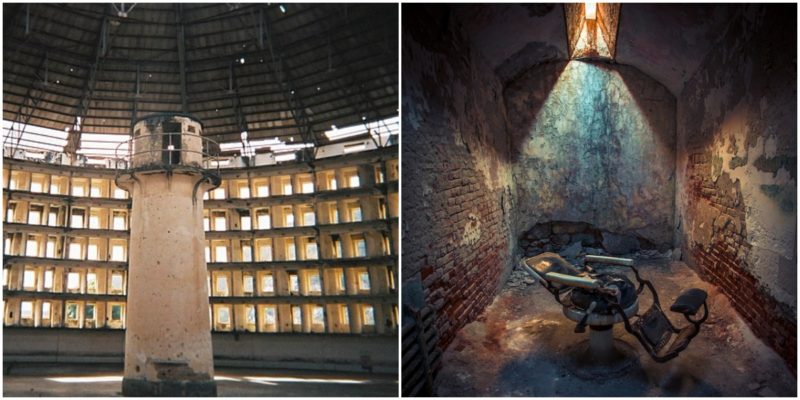On an island about thirty miles south of Cuba lies the Island of Youth or in Spanish, La Isla de la Juventud. The origin of the name remains unknown to the author of this text, but this is a place where many criminals and political prisoners spent their youth. It is not a commune for the amoral or a place where bandits dwell or honed their skills. It is a host island of the Presidio Modelo, Cuba’s panopticon prison.
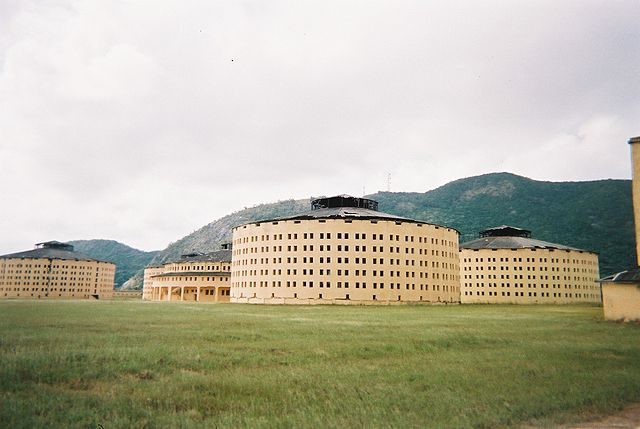
The prison is located in the suburban area of Chacóna not far away from Nueve Gerone, the central municipality of Isla de la Juventud. It was built during the repressive regime in Cuba, between 1926 and 1928, while the country was ruled by the president-dictator Gerardo Machado. Presidio Modelos consists of five separate buildings.
They are all circular six-story high structures with a watchtower in the center. All around the watchtower are the prisons cells, and each and every one of them can be seen and controlled from the center. Presidio Modelo was designed to hold a maximum of two thousand and five hundred prisoners at a time.
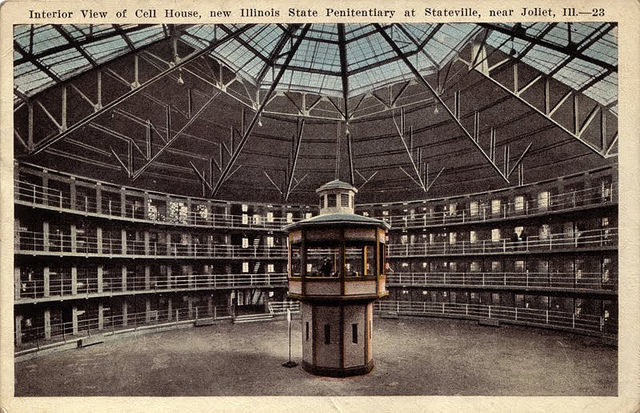
This prison was copied and modeled after the Stateville Correctional Center located in Crest Hill, Illinois. But the idea of the design itself goes further back in time and comes from another continent. Panopticon prison design originated in 18th-century England. A philosopher by the name of Jeremy Bentham came up with an idea for the most effective and efficient prison at the same time. The design varies to a degree around the world, but its most important key features are present everywhere.
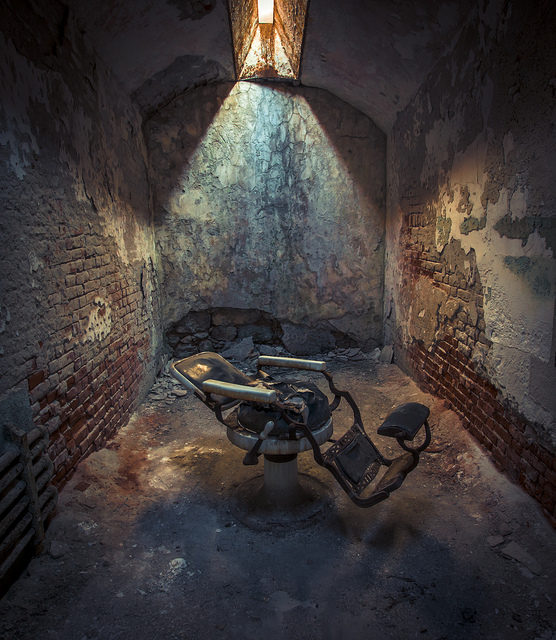
It has a circular structure with prison cells forming the walls of the prison. They have windows and bars from both the outside and inside, allowing light to enter. The prisoners are backlit and isolated from each other by walls. In the center of the prison stands the watchtower with a 360-degree view of all the cells and all the prisoners.
The windows of the tower are black and prisoners can’t see who is watching them from the inside. There are some stories that sometimes the guards left the prisoners unguarded and the tower empty and played poker in the administration building of Presidio Modelo.
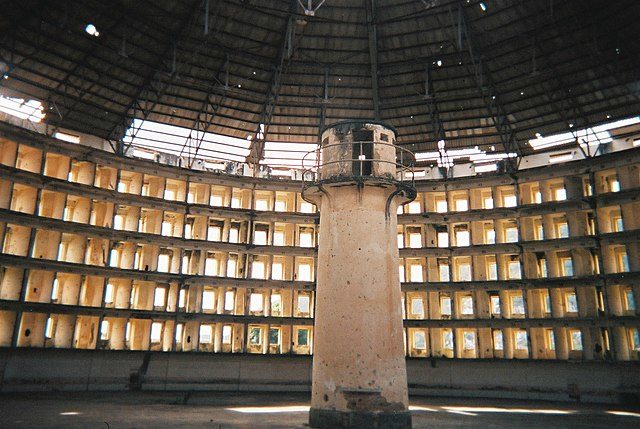
During the time of the Second World War many Japanese and even German prisoners of war were taken and imprisoned at Presidio Modelo. Also, many prominent Cuban poets and activists were jailed there as political prisoners, such as Armando Valladares, Pedro Luis Boitel, and Roberto Marin Perez. But by far the most famous prisoners the Presidio Modelo has seen were Fidel Castro and his brother Raul. They were jailed there with other rebels that survived the attacks on the Moncada Barracks on 26th of July in 1953. All of them spent a year and a half there between October 1953 and May 1955.
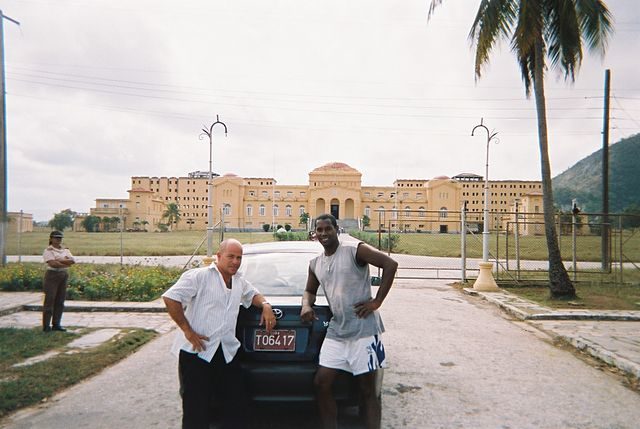
After the triumph of the revolution led by Fidel Castro in 1959, Presidio Modelo was used to jail all the political dissidents and counter-revolutionaries. But also homosexuals, Jehovah’s Witnesses, and pretty much anyone else considered unfit to wear the new country’s uniform. Many were seen as enemies to the new norms the Socialist Cuban State now dictated. At some point, the number of political prisoners in Presidio Modelo rose to eight thousand. The number of people jailed in 1961 led to overcrowding and subsequent riots and hunger strikes.
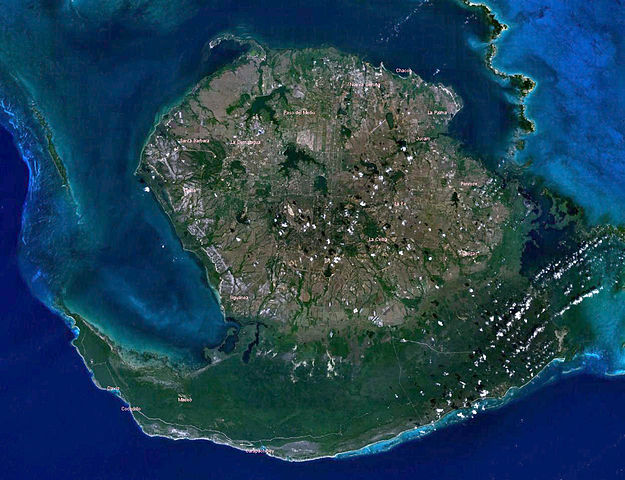
In 1967 Presidio Modelo was closed and all the prisoners were transferred elsewhere. Today the old round buildings serve as a museum of a time past and have been declared a National Monument of Cuba.
